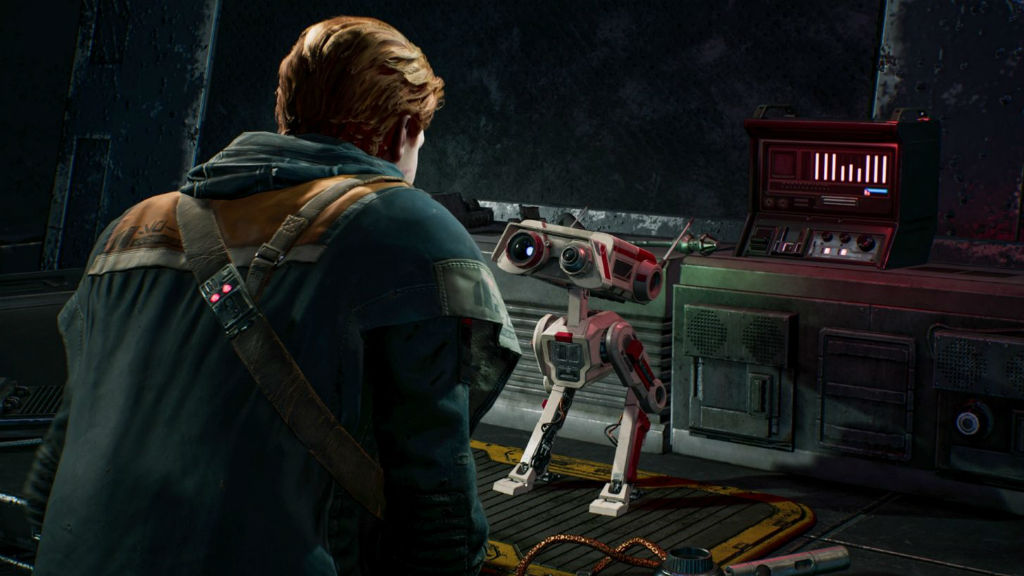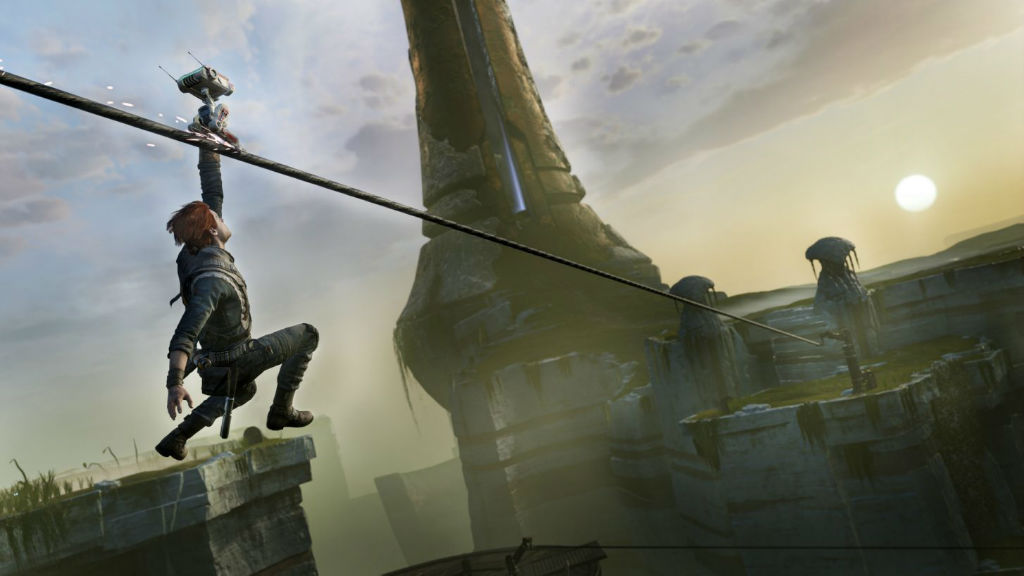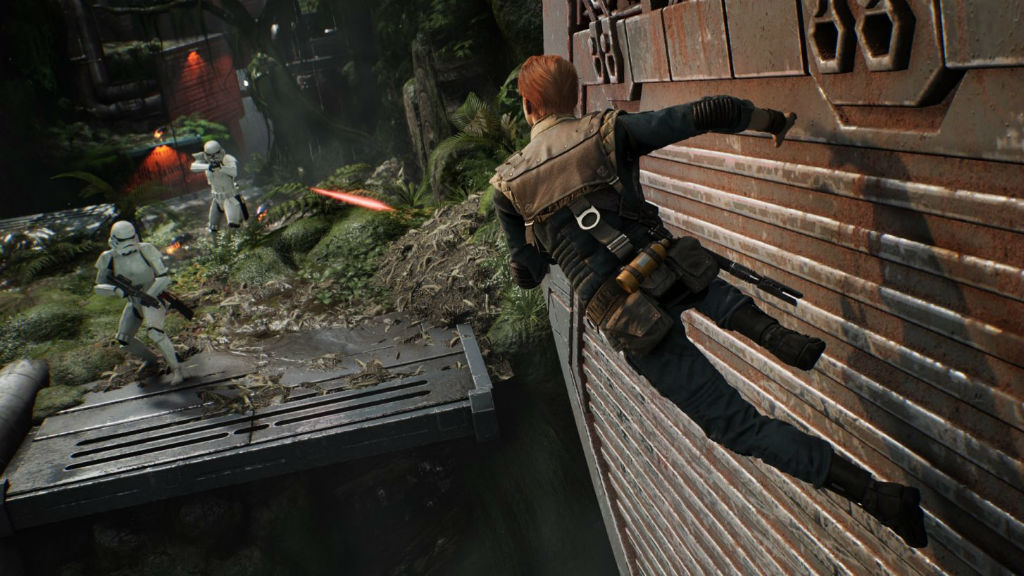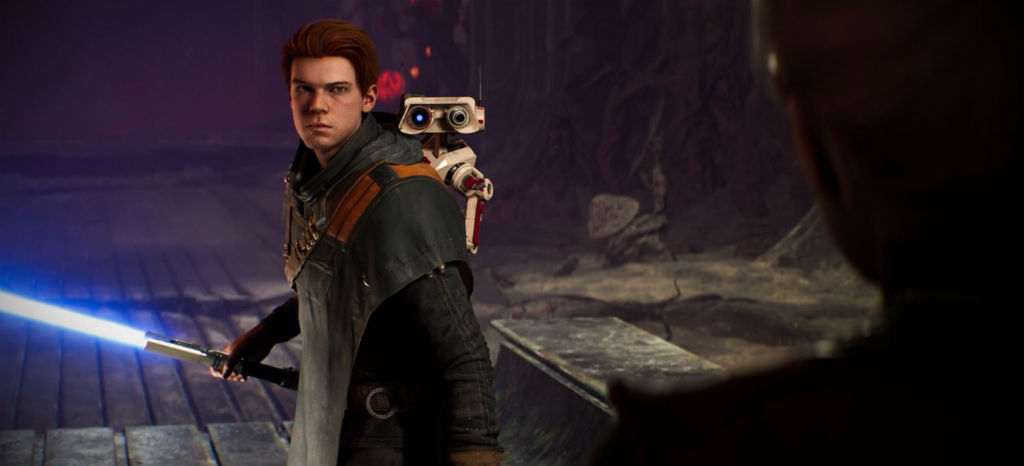There’s a scene in the first episode of The Mandalorian in which the titular character has a down payment for a bounty — a brick of Imperial Beskar metal — turned into a new piece of shoulder armor. Later on, after finishing what ended up being a particularly tough bounty, the rest of the Beskar reward is turned into an entire new set of armor for the Mandalorian, as the piecemeal one he’s wearing had “lost its integrity.”
Baby Yoda has become the focus of that series, but that early scene kept returning to me as the show’s first season rolled out en route to the end of a third Star Wars film trilogy. It also came to mind as I played Star Wars Jedi: Fallen Order, which has been a huge hit for EA in the weeks since its November release. It’s all part of a Star Wars-filled end of 2019, filling out the canon with a slew of new content in various forms after Disney largely threw off its extended universe when the property was acquired in 2012.
Before Disney, the balance of that extended universe was weighed heavily toward the films, and for good reason. The rest of the books, comics, video games, and other things were an added bonus, and a necessary one in a universe where there were just three (and later, six) films. That’s not the world that Fallen Order entered into, one where it can often feel more like consuming a wide swath of content quickly is needed to smelt the various pauldrons and gauntlets and greaves necessary for Star Wars fandom.

The amount of tie-ins and Star Wars content to take in at this point can feel overwhelming. It’s not uncommon to see commercials for The Mandalorian and the Disney+ subscription service it streams on, with a commercial for Fallen Order right after that. And then there’s the media blitz for Rise of Skywalker to boot. It’s hard to ignore, and there’s a genuine fear of missing out on things, especially when it’s all considered canon and will inevitably tie together. It’s unfair to boil an evaluation of it all down to justifying whether it’s worth further investing in the ecosystem to pay for all that content but, well, it’s a significant factor.
In the case of Fallen Order, it’s a game that plays a lot like a Star Wars version of Uncharted, which certainly isn’t a bad thing. And it’s no surprise that it’s a title that wasn’t a Star Wars game first. The story Fallen Order tells came later, and it’s a good one, though once it’s over, you realize that it’s far from essential to the canon.
Unlike some other Star Wars games, most notably the beloved Knights of the Old Republic, there’s no choice to be made between the light and dark. In Fallen Order you’re a good guy, Cal Kestis, a Jedi Padawan that survived Order 66 and is in hiding from the Empire a few years after Episode 3: Revenge Of The Sith.

Cal and his crew travel through the galaxy uncovering Jedi secrets, slowly expanding our view of planets like Bogano, Zeffo and Dathomir. It’s fun, the melee combat system is challenging but can be well-tailored to how you actually want to fight. The story is satisfying, while the acting well-done and rendered beautifully. You build a lightsaber on Ilum, explore the wilds of Kashyyyk and encounter Inquisitors trained by Darth Vader as the Empire searches for what they think is The Last Jedi.
Cal recovers his connection to the Force and builds up his skills as he tries to save the future of the order. But in the later stages of Fallen Order, Cal openly wonders why he’s going through the story at all. Each time he visits a planet he brings more attention from the Empire, further polluting Kashyyyk and bringing Sith and Purge Troopers to vital Jedi historical sites, putting the future at risk as he tries to save it.
It’s important to note that a lot of the post-Disney canon has been very good. A single line from the first Star Wars film was turned into a prequel that stands as one of the best Star Wars films out there. But Rogue One never idly wondered what damage it was doing to the universe it occupies, which Cal wonders to himself on the Wookie home planet in the game. Others ask Cal as well, influencing a final decision that closes the game’s story. But those questions largely go unanswered, and it’s easy to feel like a passenger in the story as the game barrels forward.
The game’s seams show the further you get in the story. Chests rattle underwater despite BD-8 staying on your shoulder and not rummaging around in them for loot. The stutters and stops of loading grow longer and more frustrating, especially when happening during puzzles or combat. None of it is enough to make it a broken or even bad game. It’s far from it. But it also adds to the feeling that something’s missing from the larger puzzle, an accessory more than essential element of the universe.

Like The Mandalorian it’s absolutely a Star Wars story, and the formula is familiar, too: a largely alone adventurer, an adorable sidekick and some convenient timing on the release leading up to an exclamation point on the Star Wars universe’s Skywalker Saga. There’s a lot more Star Wars out there these days, sure, but it’s hard not to notice the feeling of diminishing returns that comes with the increased quantity.
So much of Star Wars is largely telling the same story as the first movie: a hero rising from nowhere, learning about themselves and making a choice that impacts the fate of the galaxy. It’s not a bad thing — it’s a good story and one fans want to see recreated. They’ve paid for it enough to justify the ride coming together again. But in Fallen Order, the story itself calls into question why it exists in the first place, then makes a choice that renders the journey largely irrelevant. When there’s so many other Star Wars stories to keep up with, it’s easy to file this one as far less pressing than the others.

